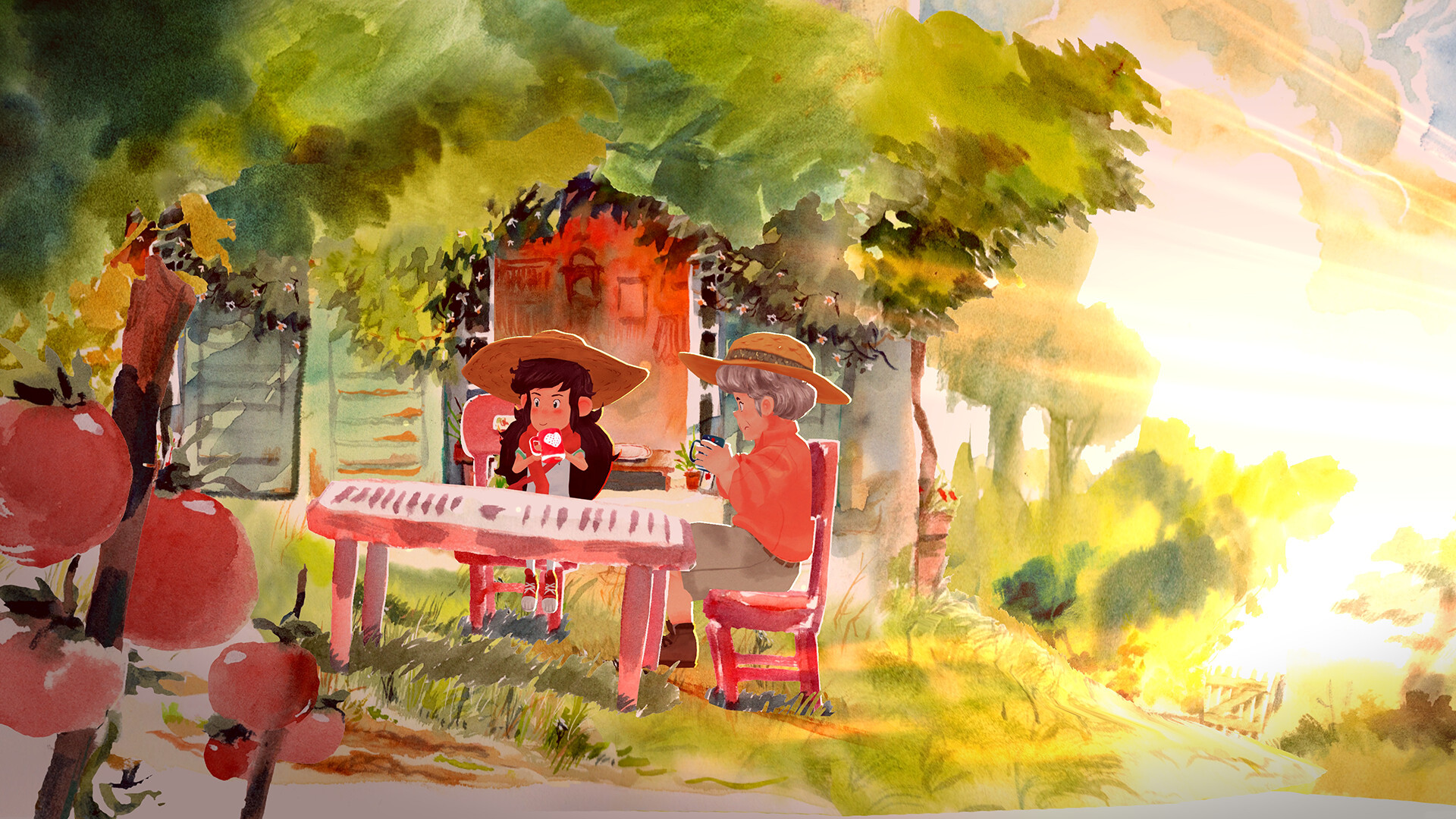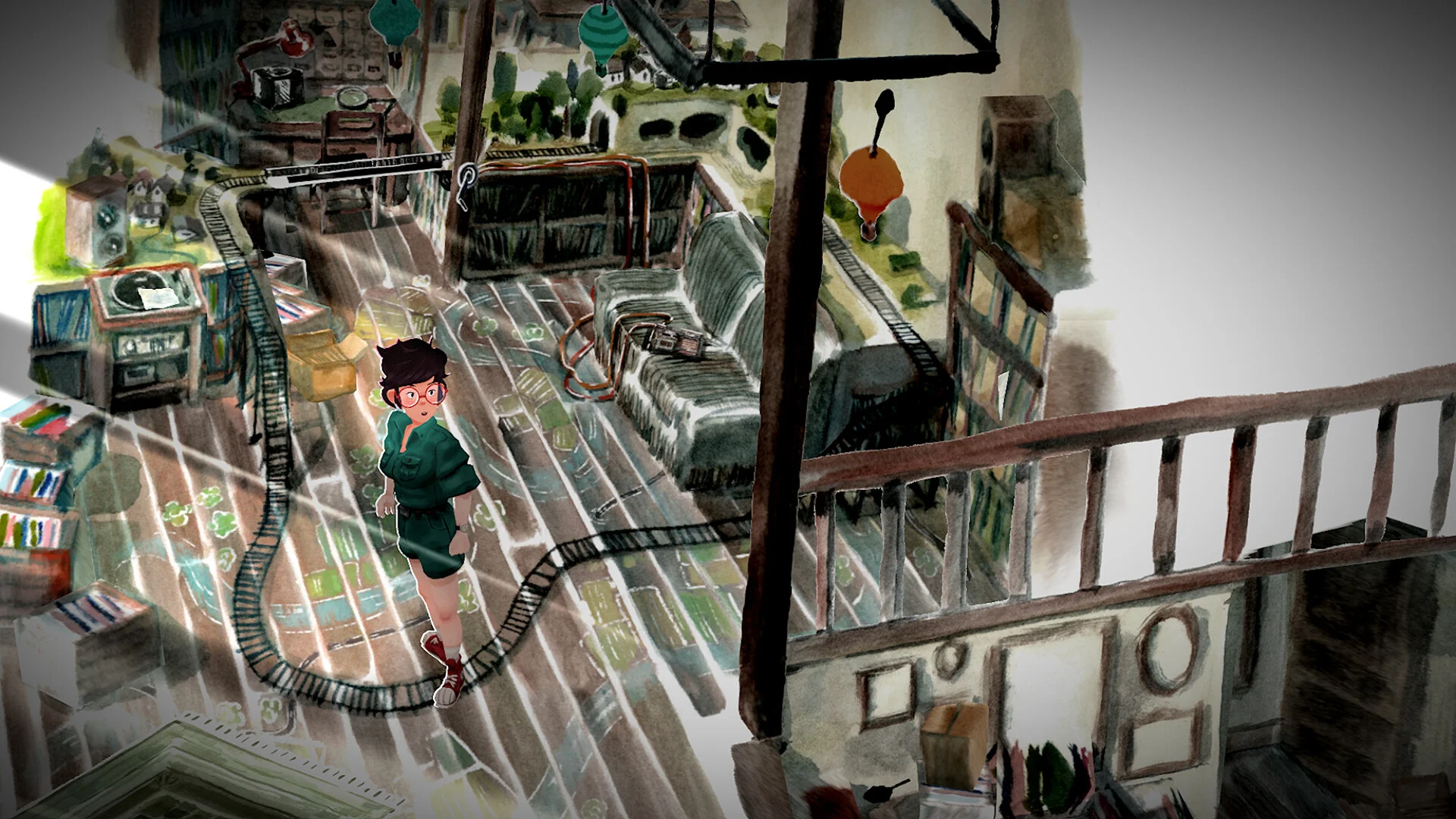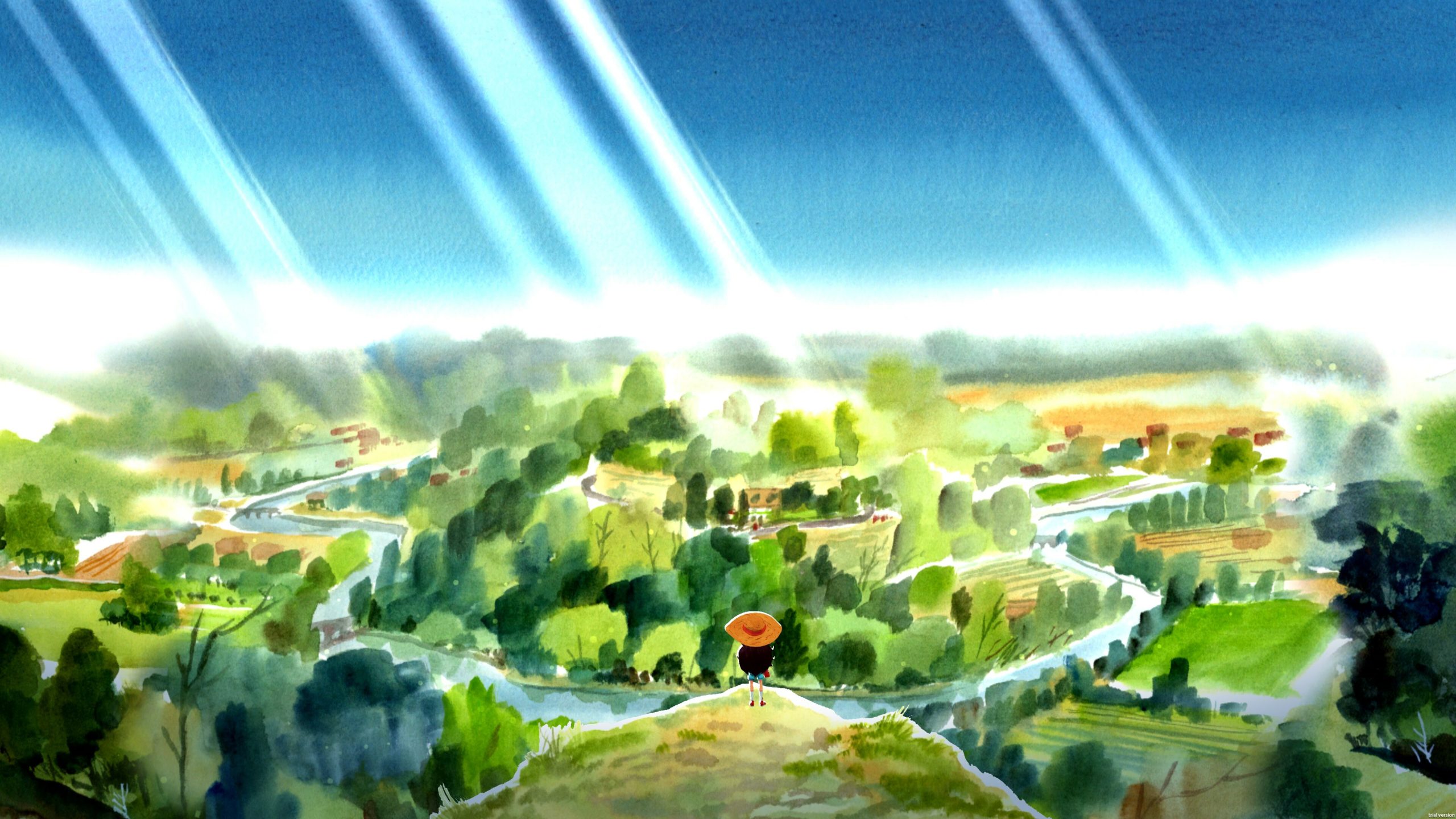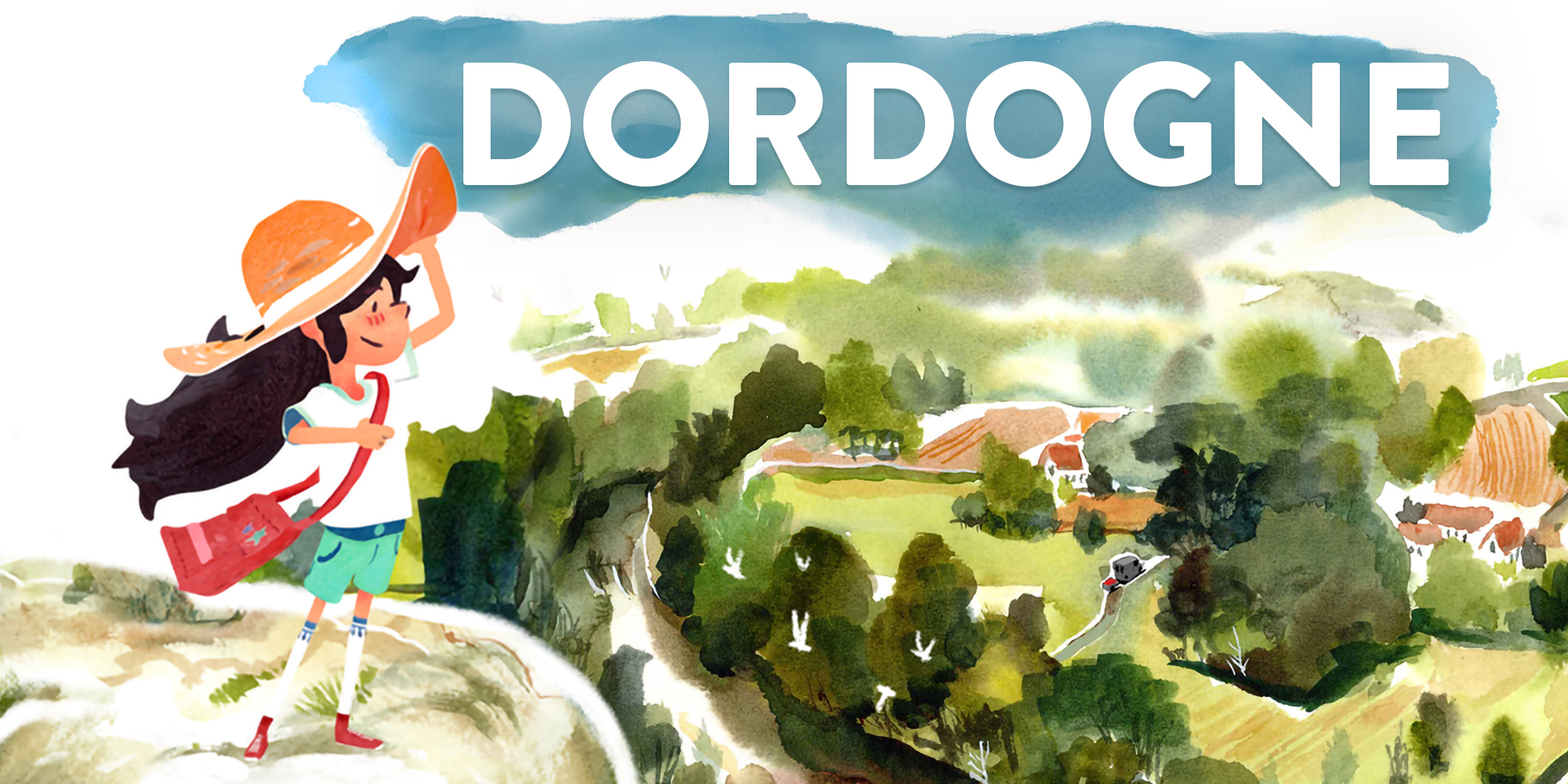I’ve really toured France this month in video games. With my review of Decarnation and now Dordogne, the latter was certainly a welcome and more heartwarming change of pace. I first saw Dordogne at the Nintendo Indie Game Showcase 2022, and I fell in love with the handcrafted watercolour art style.
Seven months later, and about a million Game of the Year contenders played, Dordogne is a wonderful detour from your AAAs to give you a more quaint and heartfelt game. The game plays as a scrapbooking adventure game as you wander through watercolour paintings of the French village Dordogne, but is a picture worth a thousand words with this painterly adventure? Let’s find out.
When In France
You play as Mimi through two separate times in her life. We meet her in the 2000s in her 30s as she’s approaching the empty house of her grandparents. Mimi’s arrived to pick up some sentimental belongings at the behest of her dad, and as you go through the rooms letters and objects take you back to the last summer you spent there 20 years earlier.
This is where you spend the bulk of your time in the game. A young reluctant Mimi wants to spend her summer at home with friends, not her Grandmother Nora. During the chapters you learn more of Nora’s story through letters found around the house, slowly answering the questions of what happened to Mimi’s Dad, her Grandfather and the family’s impact on the town. It’s a strained relationship on all fronts that rears its ugly head in some of the downtime, but outside of that, you’ll be taking in all the sights and sounds Dordogne has to offer.

The story is a slow burn. I felt like it was meandering for the majority of the story, eloquently so, mind, but it really brought it all together by the end. I was caught off guard and it really reframed how I spent my time. The majority of the story is subtly pieced together through letters told by friends of Mimi’s Grandparents and adds lovely context to personalities that you don’t see.
I will say though, some of the handwriting in the letters aren’t entirely legible and there isn’t any accessibility option to assist either, which could mean a lot of context is lost for some players. However, the story overall is well-told, emotional and relatable.
I Know What You Did Last Summer
I can definitely see what the dev teams were going for with the gameplay. There’s a sizeable victory in the execution of literally walking through a watercolour painting. Besides Mimi and the other characters in the game, everything else is a sumptuous painting giving such an amazing effect. With that though, comes limitations like fixed camera angles, clunky almost tank-like controls and a very strict playable space. I often found myself stopping at invisible walls and fumbling to fight out of that corner whilst looking for collectables.

Outside of the main narrative you have a scrapbook that uses your collection of stickers, photos taken, sounds recorded and words found from your exploration. On paper, it sounded like the mechanics of Season: A letter to the future. In execution, it’s a lot more restrictive which is a shame. You can only take photos and record sounds in marked locations. There’s no backtracking either, so if you’ve missed a sticker or a word you can’t pick them back up. This results in only ever being able to make one page in your scrapbook per chapter, using one of each medium and leaving out everything else. Collecting and recording is fun overall, just a little limited.
During the chapters, you face a varied amount of minigames. Something as simple as making yourself a bowl of cereal in first person with each analogue stick being your hands is a cute and fulfilling way to be an active participant in the story. There are so many different opportunities like that example, all equally as engaging and unlocking that childlike wonderment. Despite the game not being as free-flowing as I hoped, the linearity made the overall gameplay more focused, aligning with the story.
A Pretty Picture
Going through the varied environments and feeling like you’re reliving the memories with Mimi is part of what makes this game tick, but I must talk about the audio/visuals. I can’t overstate how gorgeous the handcrafted art style in the game is. The handcrafted elements are so intricate in detail, with so many different and varied locations to discover it’s brilliant. The splash of summer colours fill the screen so flawlessly, I wanted to screenshot every different area I discovered.

On the side of the audio, Supernaive has created a wonderful mixture of jangly guitars, echoing synths and infectiously rhythmic drums, as well as a main theme that ties to the game so potently. It perfectly blends a sense of nostalgia whilst sounding like modern experimental EDM you’d hear on a Flume mixtape. The sounds are interpolated like it’s an old worn vinyl you found in Nora’s attic. I think the biggest compliment I can give the music, is that it would be an album I’d pick up outside of its video game context.
In-game sounds aren’t usually something I notice. Like in the way a film’s edited, you don’t notice it when it’s good. However, there’s a lot of downtime if you’re sifting through every nook and cranny for the collectables, so I was swept up in the ambience. Sifting through books and hearing the thud of paper or creaking through the quiet house at night, it just rounds off an already polished audio/visual experience.
Au Revoir, Dordogne
If you go into Dordogne expecting less of a summer vacation of scrapbooking and more so an enriched and emotional narrative game, you’ll come away happy. That’s not to say I didn’t. The painted environments, the soundtrack – which could end up being my favourite this year – as well as the story it tells are all extremely high points for the game. The gameplay, however, probably went through a tough cycle of trying to fit the world, instead of the world working around the gameplay.

I imagine it’s a rare example of where the creator’s vision creatively meant the gameplay had to be stripped back a little to not get in the way. For me, the gameplay has to be more compelling and usually the best to do it works in tangent. That’s not to say it was all bad, I definitely had my fun but it felt held back. I’m excited to see what the dev team can come up with next. As a debut, this is a brilliant collage of different mediums to make a great experience, but an ok game.
Dordogne’s limited gameplay stints what is otherwise an exceptionally creative experience. The story is impactful and the handcrafted watercolour-painted world is beyond impressive, not to mention a soundtrack of the year contender. You won’t get lost in the brush strokes, but you will fall for its incredible charm.

Dordogne is available now for PlayStation 5 (review platform), PS4, Xbox Series X|S, Xbox One, Nintendo Switch and PC via Steam.
Developer: Un Je Ne Sais Quoi, Umaninmation
Publisher: Focus Entertainment
Disclaimer: In order to complete this review, we were provided with a promotional copy of the game. For our full review policy, please go here.
If you enjoyed this article or any more of our content, please consider our Patreon.
Make sure to follow Finger Guns on our social channels. Twitter, Facebook, Twitch, Spotify or Apple Podcasts – to keep up to date on our news, reviews and features.
